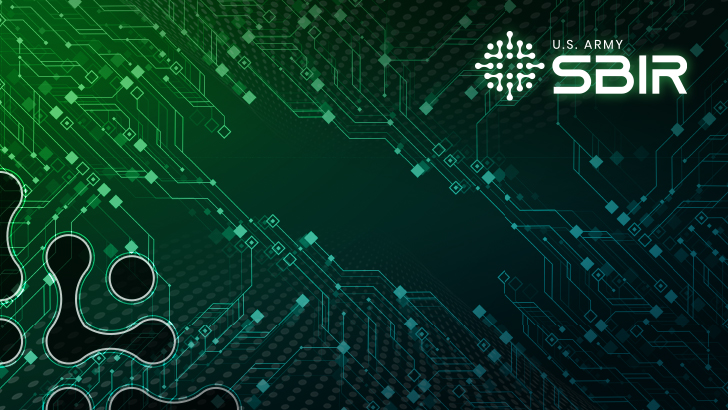

Objective
To develop a software solution to translate ground-based full-motion video (FMV) data collected by Engineer reconnaissance assets into a digital product that can be manipulated and analyzed to answer intelligence requirements and inform command decisions. This tool will assist Engineers in exploiting the previously underutilized resource of ground-based FMV data, providing engineers and decision-makers with a visualization of obstacles and mobility corridors.
Description
This topic focuses the development of analytical tools for processing tactical sensor data to automate engineer reconnaissance functions. Army engineers possess capabilities to acquire reconnaissance data from a suite of sensors housed in the Instrument Set, Reconnaissance and Surveying Toolkit (ENFIRE). A Microsoft LifeCam video camera and Ricoh G800SE digital camera capture imagery and focal length augmented by laser range finder distance measurements. Currently, Soldiers capture video imagery as reconnaissance teams traverse areas of interest and then transport and offload data for post-processing. Our effort will decrease collection and exploitation times thereby collaterally benefitting delivery of intelligence necessary for command decisions.
Phase I
Determine the technical feasibility of ingesting, processing, and displaying imagery from multiple ground sensors focusing on a single geographic objective, i.e. roads, bridges, tunnels. During Phase 1, formats and resolution of data provided by current sensors within the ENFIRE system should be reviewed and assessed. Some field testing is anticipated to verify that the technical approach is achievable for further development in Phase 2. Deliver a report documenting the initial research activities under Phase 1 to document the initial concept.
Phase II
Implement the Phase I architecture on ENFIRE edge computing devices. Demonstrate the prototype capability to generate digital products of specific portions of routes, such as bridges and tunnels. Demonstrate in-app essential analytical tools, including dimensions of obstacles. Demonstrate capabilities potential for integration into existing ENFIRE hardware and workflows. Army Engineers shall conduct the final demonstration in a field environment with a relevant tactical scenario, such as a route reconnaissance mission.
Phase III
The work has a broad range of applications for military reconnaissance and mission planning. The studies conducted under Phase 1 and 2 will be novel and useful in establishing a framework for expediting the process of analyzing engineer reconnaissance data. This work would validate and integrate outcomes of the research into the ENFIRE system. Additional applications of this work would exist for any agency performing disaster recovery missions or other functions requiring actionable information on infrastructure.
Submission Information
Submit in accordance with DoD SBIR BAA 23.2

References:
Objective
To develop a software solution to translate ground-based full-motion video (FMV) data collected by Engineer reconnaissance assets into a digital product that can be manipulated and analyzed to answer intelligence requirements and inform command decisions. This tool will assist Engineers in exploiting the previously underutilized resource of ground-based FMV data, providing engineers and decision-makers with a visualization of obstacles and mobility corridors.
Description
This topic focuses the development of analytical tools for processing tactical sensor data to automate engineer reconnaissance functions. Army engineers possess capabilities to acquire reconnaissance data from a suite of sensors housed in the Instrument Set, Reconnaissance and Surveying Toolkit (ENFIRE). A Microsoft LifeCam video camera and Ricoh G800SE digital camera capture imagery and focal length augmented by laser range finder distance measurements. Currently, Soldiers capture video imagery as reconnaissance teams traverse areas of interest and then transport and offload data for post-processing. Our effort will decrease collection and exploitation times thereby collaterally benefitting delivery of intelligence necessary for command decisions.
Phase I
Determine the technical feasibility of ingesting, processing, and displaying imagery from multiple ground sensors focusing on a single geographic objective, i.e. roads, bridges, tunnels. During Phase 1, formats and resolution of data provided by current sensors within the ENFIRE system should be reviewed and assessed. Some field testing is anticipated to verify that the technical approach is achievable for further development in Phase 2. Deliver a report documenting the initial research activities under Phase 1 to document the initial concept.
Phase II
Implement the Phase I architecture on ENFIRE edge computing devices. Demonstrate the prototype capability to generate digital products of specific portions of routes, such as bridges and tunnels. Demonstrate in-app essential analytical tools, including dimensions of obstacles. Demonstrate capabilities potential for integration into existing ENFIRE hardware and workflows. Army Engineers shall conduct the final demonstration in a field environment with a relevant tactical scenario, such as a route reconnaissance mission.
Phase III
The work has a broad range of applications for military reconnaissance and mission planning. The studies conducted under Phase 1 and 2 will be novel and useful in establishing a framework for expediting the process of analyzing engineer reconnaissance data. This work would validate and integrate outcomes of the research into the ENFIRE system. Additional applications of this work would exist for any agency performing disaster recovery missions or other functions requiring actionable information on infrastructure.
Submission Information
Submit in accordance with DoD SBIR BAA 23.2
References:
